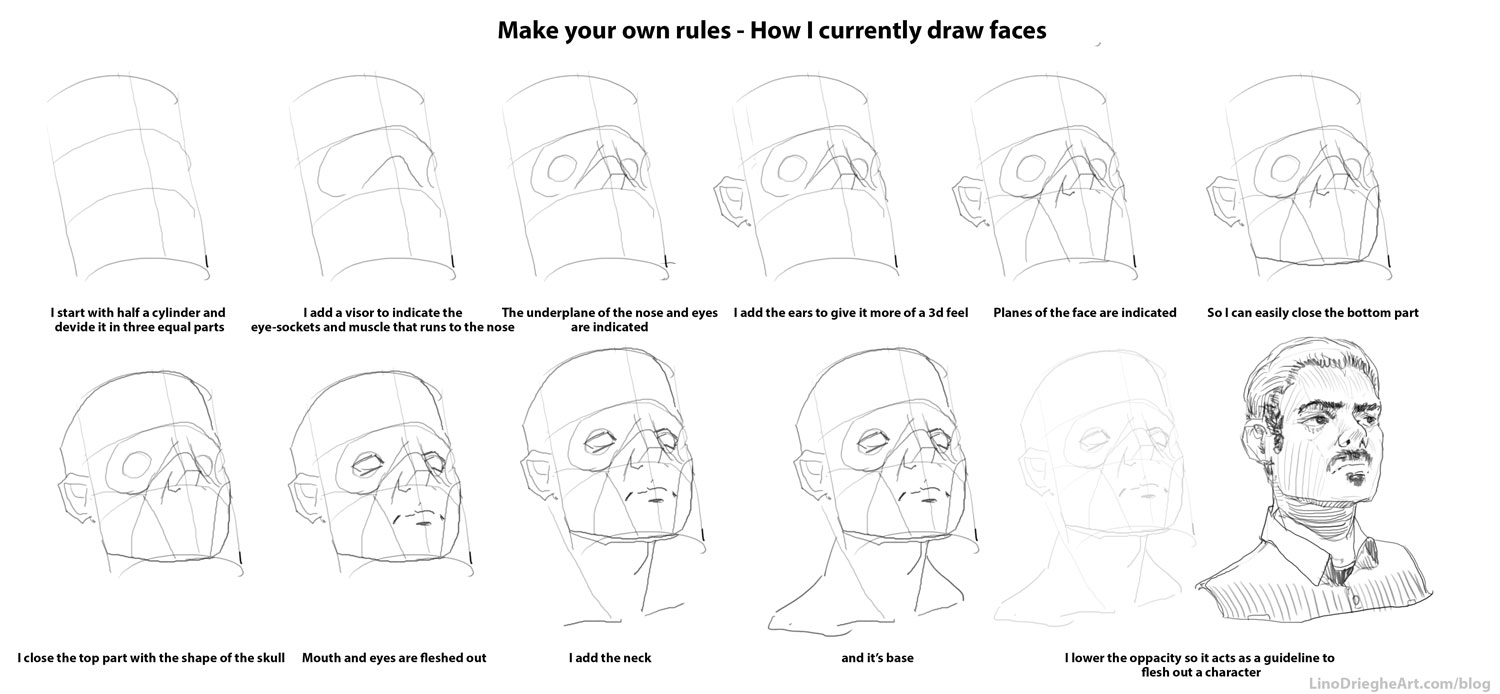Years ago, when I started building my Visual Library for the first time, I just copied reference after reference after reference. That was a good start at that time, but recently I discovered that I had to switch to a more challenging approach sooner.
Once I got the hang of the fundamentals like perspective and my overall line quality was improving, it was time to take everything to the next level. I didn’t and as a result, I wasn’t improving as fast as I could at that period in time. This is the reason why I’m writing about this because I notice that most of my students suffer from the same ill-thinking. When I was building my visual library, I was just copying the reference images without really thinking about ways to recreate it later. The problem then is that the topic I was studying was not really sticking in my mind. If you start practicing with the right mindset and techniques, you’ll build your visual library quicker and get better at drawing faster.
Make your own rules
Nowadays, when I study to build my Visual Library, I brake down the reference in basic shapes and find my own workflow to recreate it step by step. I use small guidelines that I can use to remember how to draw something. The steps are not too complex so I remember them better when drawing. Working with basic shapes like boxes and cylinders allow me to recreate the reference more easily in perspective.
This is how I go over drawing a reference to build my visual library. I compare it to studying for a test. I would question myself over and over to see if the matter sticks:
- Draw without the reference (I check what I already know about the topic)
- Observe the reference. (I make a list of elements that make up the topic I’m drawing)
- Start drawing from the reference (I break the reference down in simple shapes and steps. ‘What would be the most simple way to remember this part?’)
- Draw without the reference (I test myself)
- Check the drawing with the reference and fix the problems (I adjust the simple shapes or steps when needed)
- Draw the reference from a different angle (I check of it really sticks. This step you can do every moment of the day!)
Finding the best simple shapes or steps to recreate the reference I’m drawing can be hard and for me. It depends a lot on the complexity of the topic. That’s why I often times repeat the process from step 2 until I can draw the object from my imagination in every angle possible.
To give you an idea, I’m currently studying drawing the head from every angle possible. I’m currently using the steps below to get there. Obviously, the only way to get better is to study more from references and refine my workflow (step 5)

I’m definitely interested to find out how you practice your drawing skills and how I can improve my way of working. Please find me somewhere and let me know!

Comments